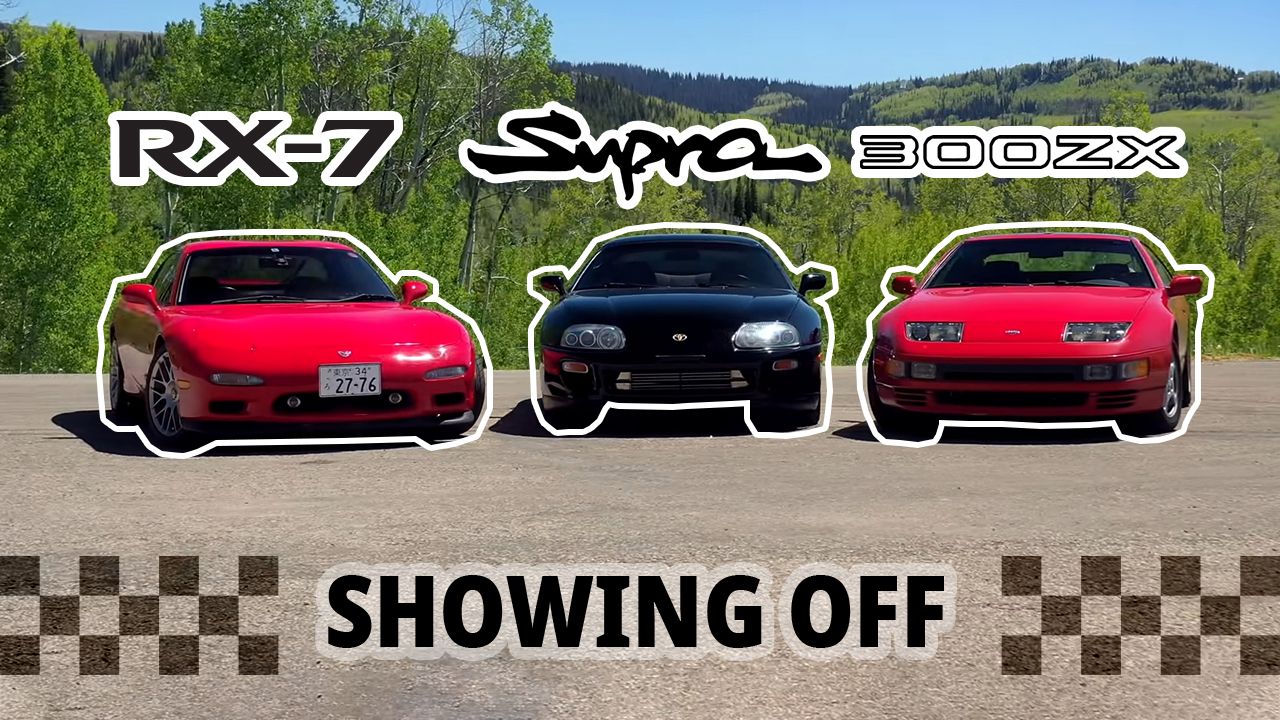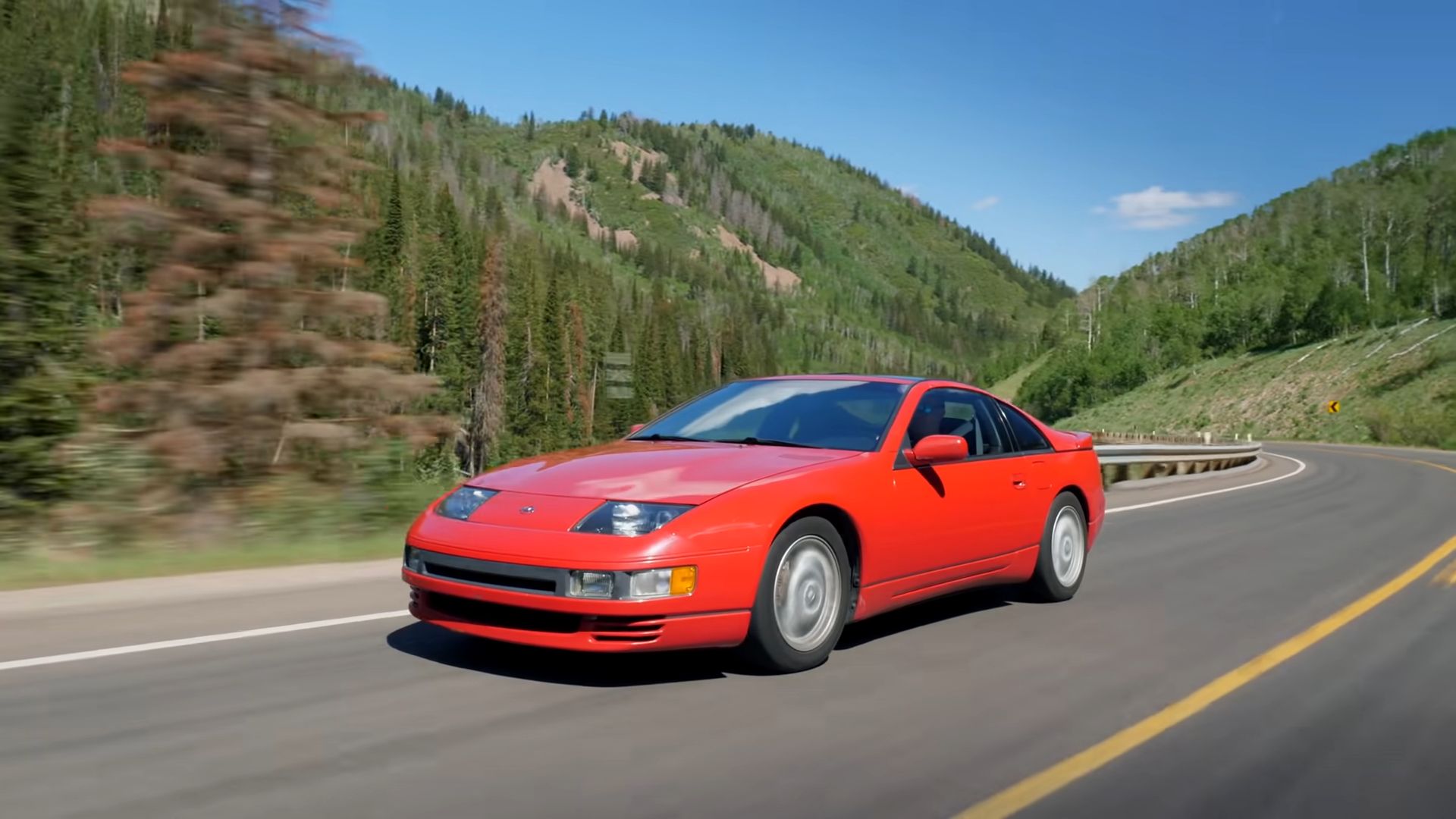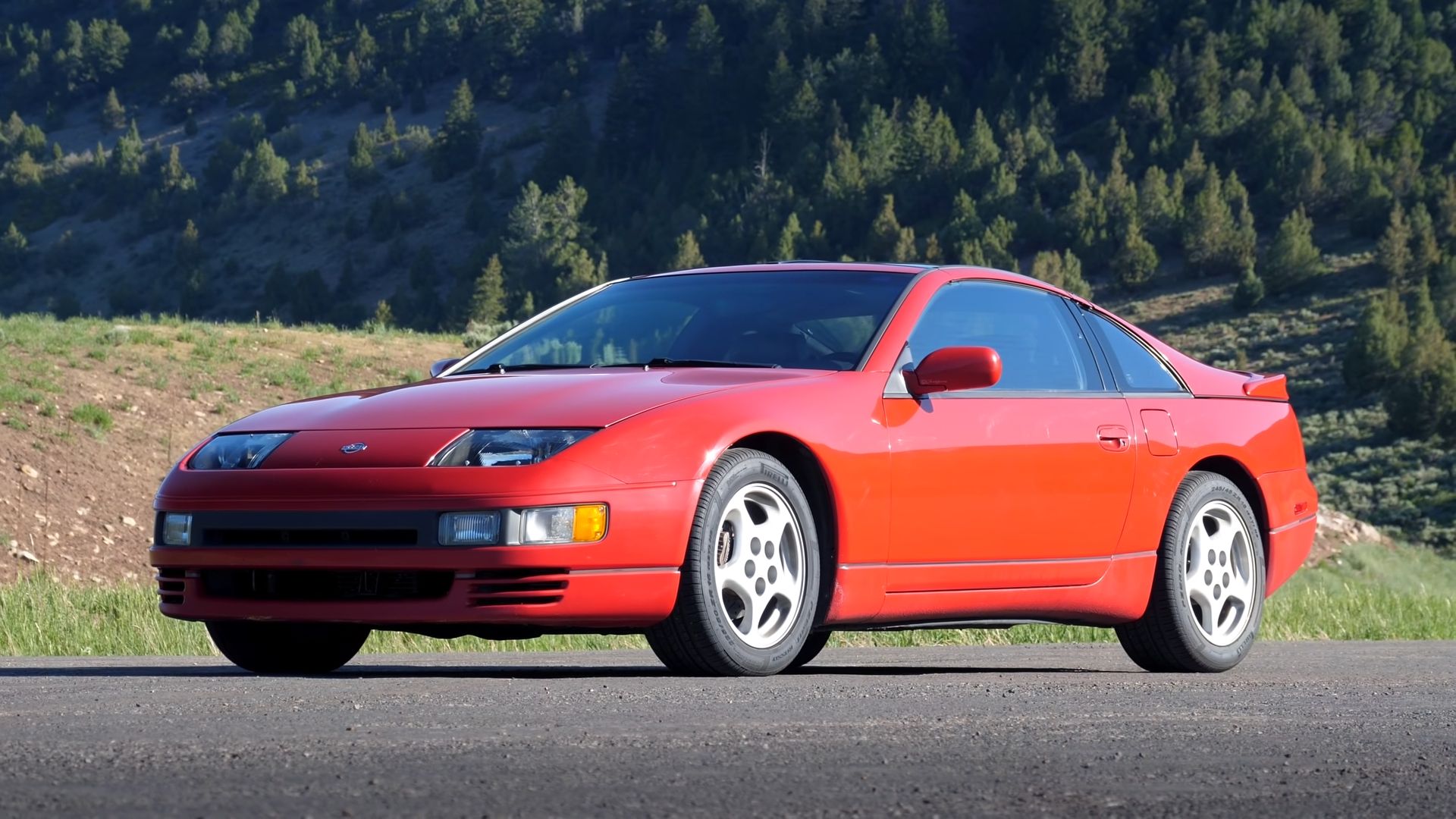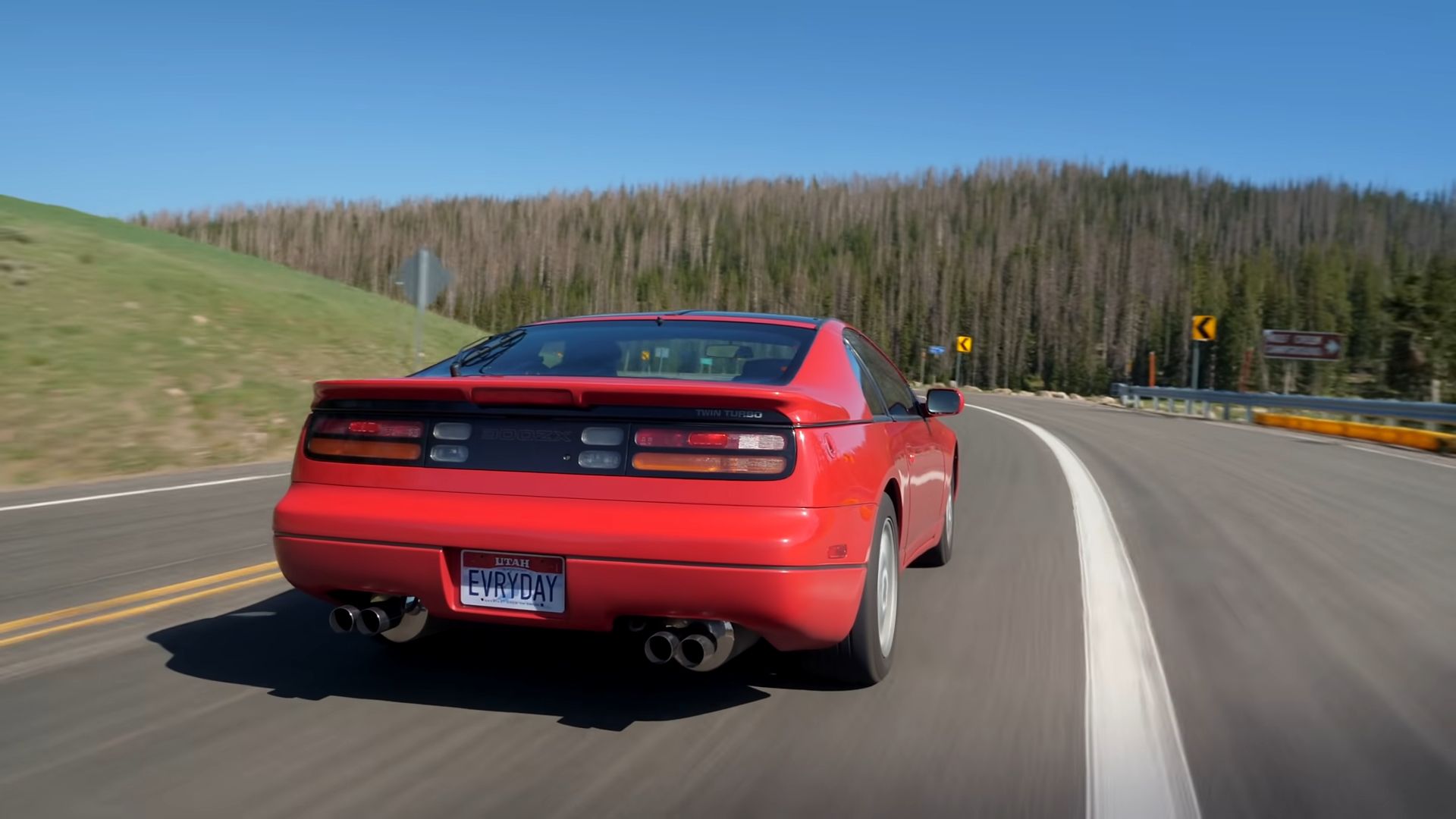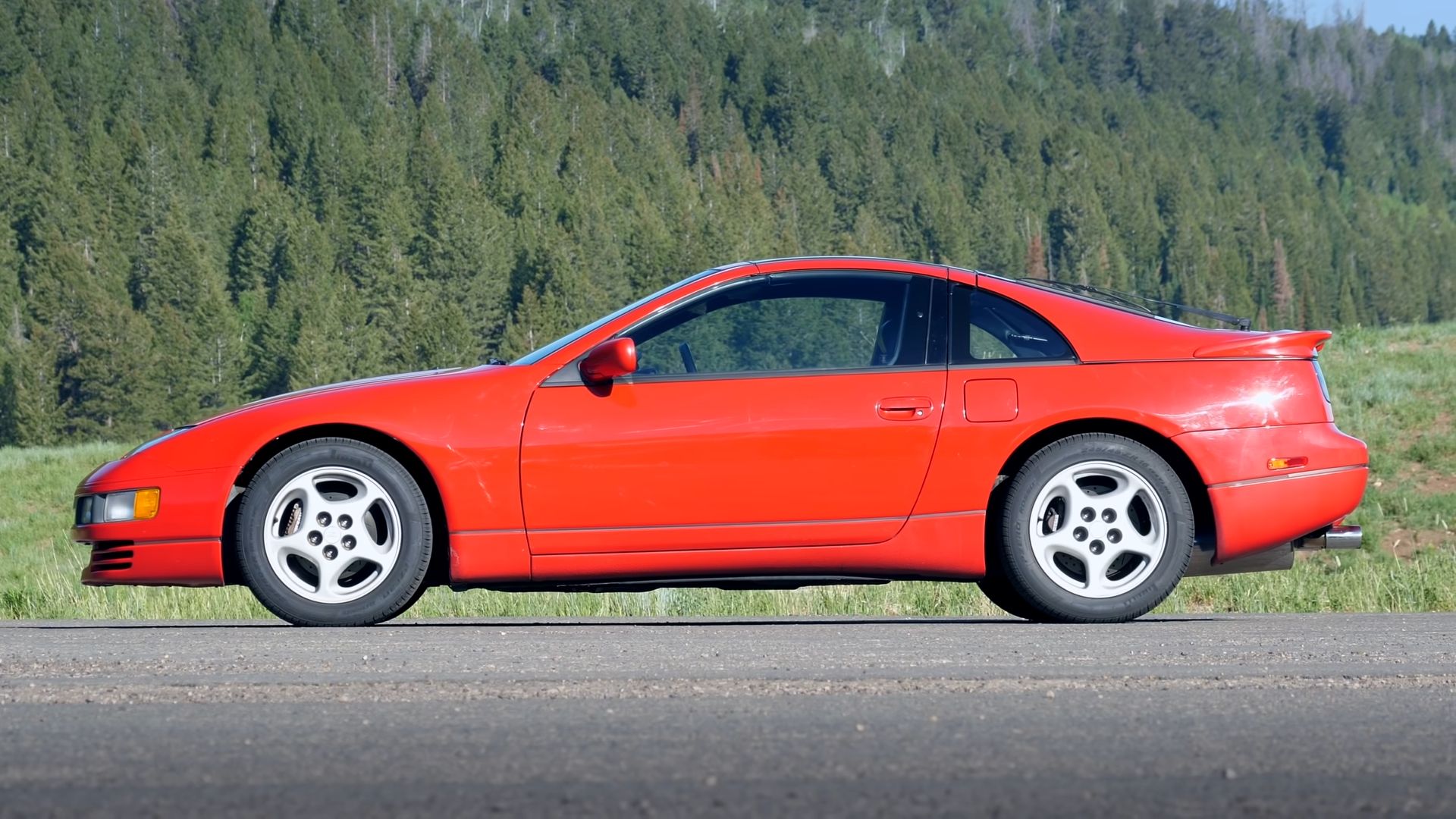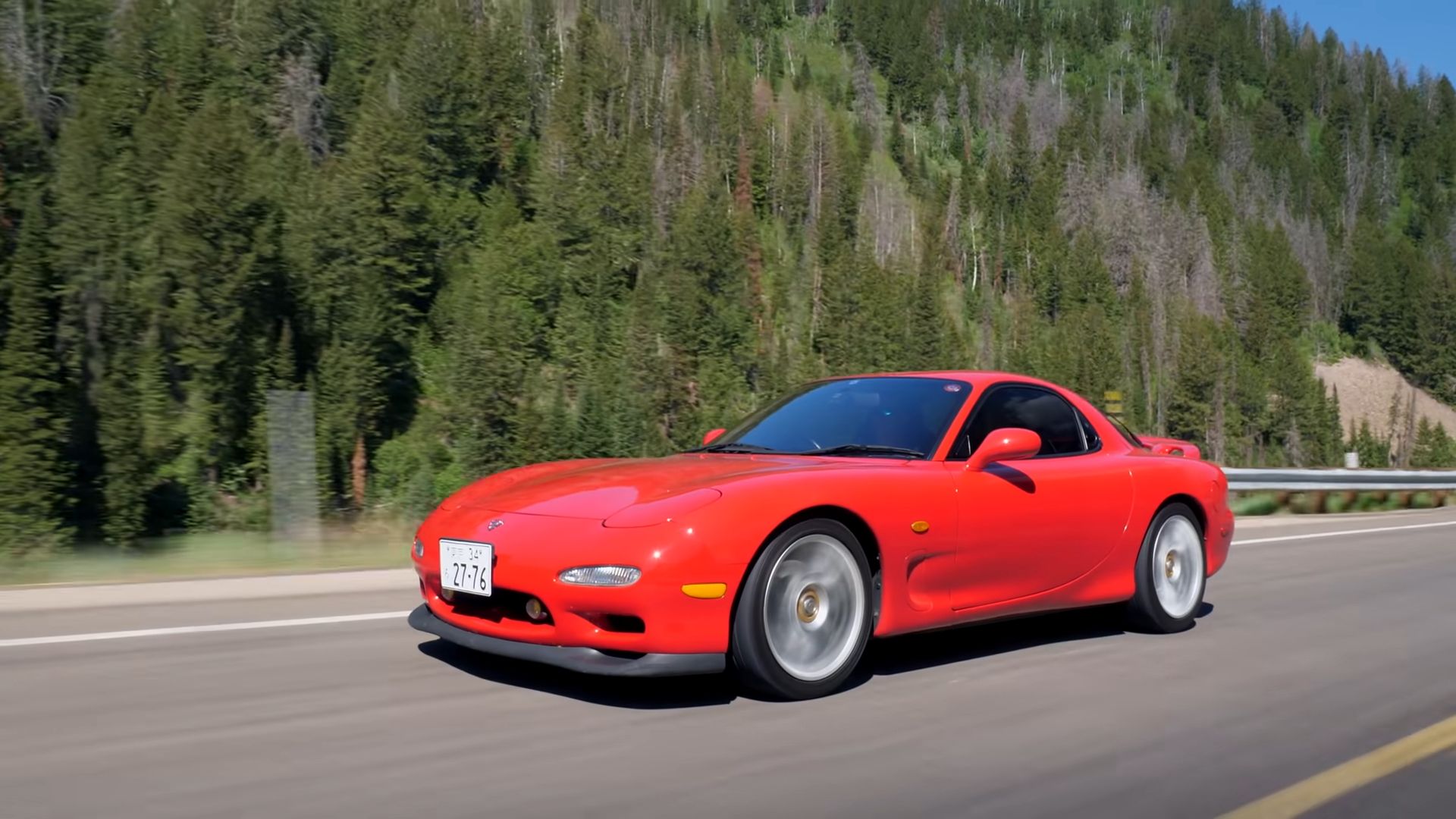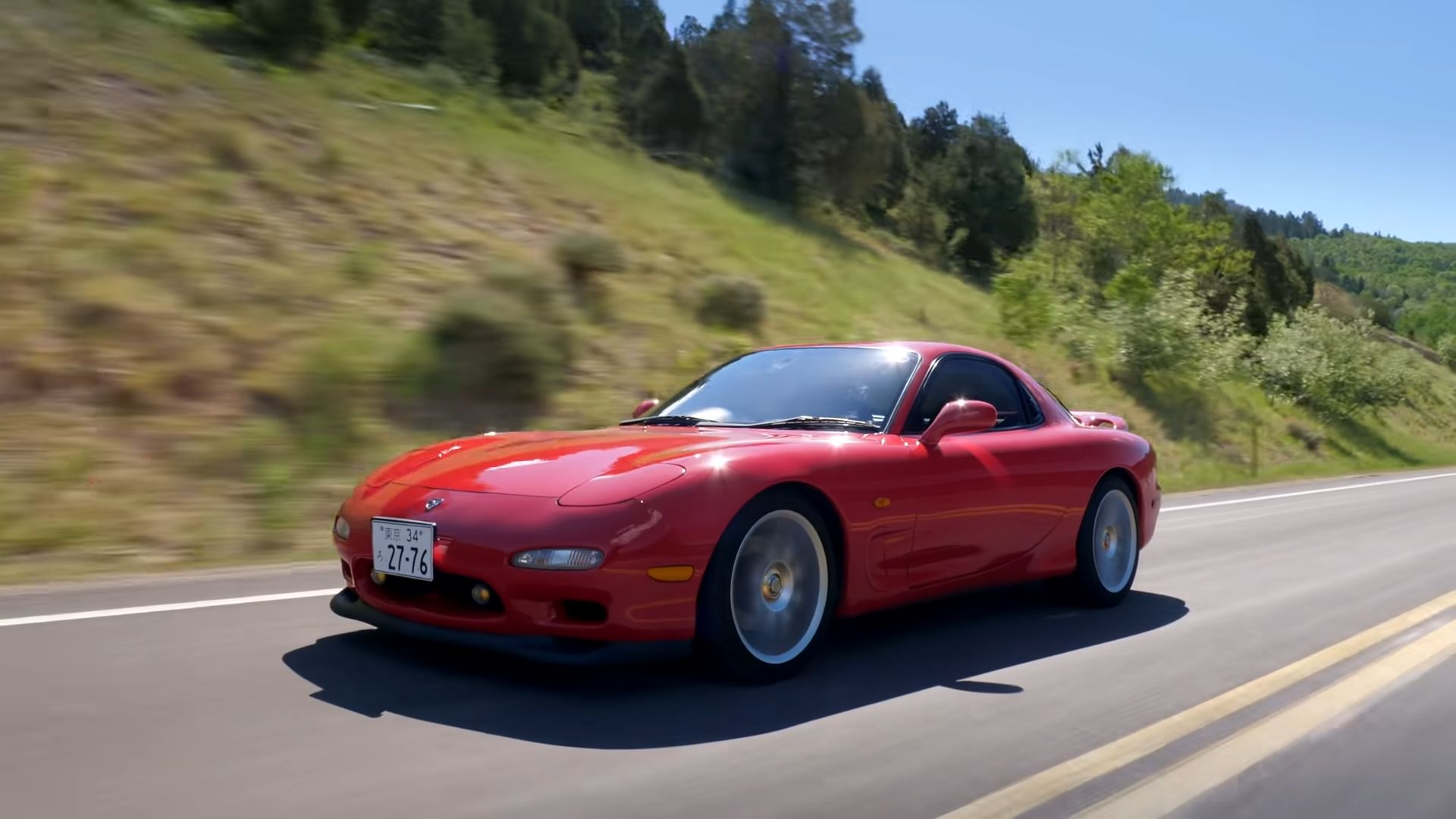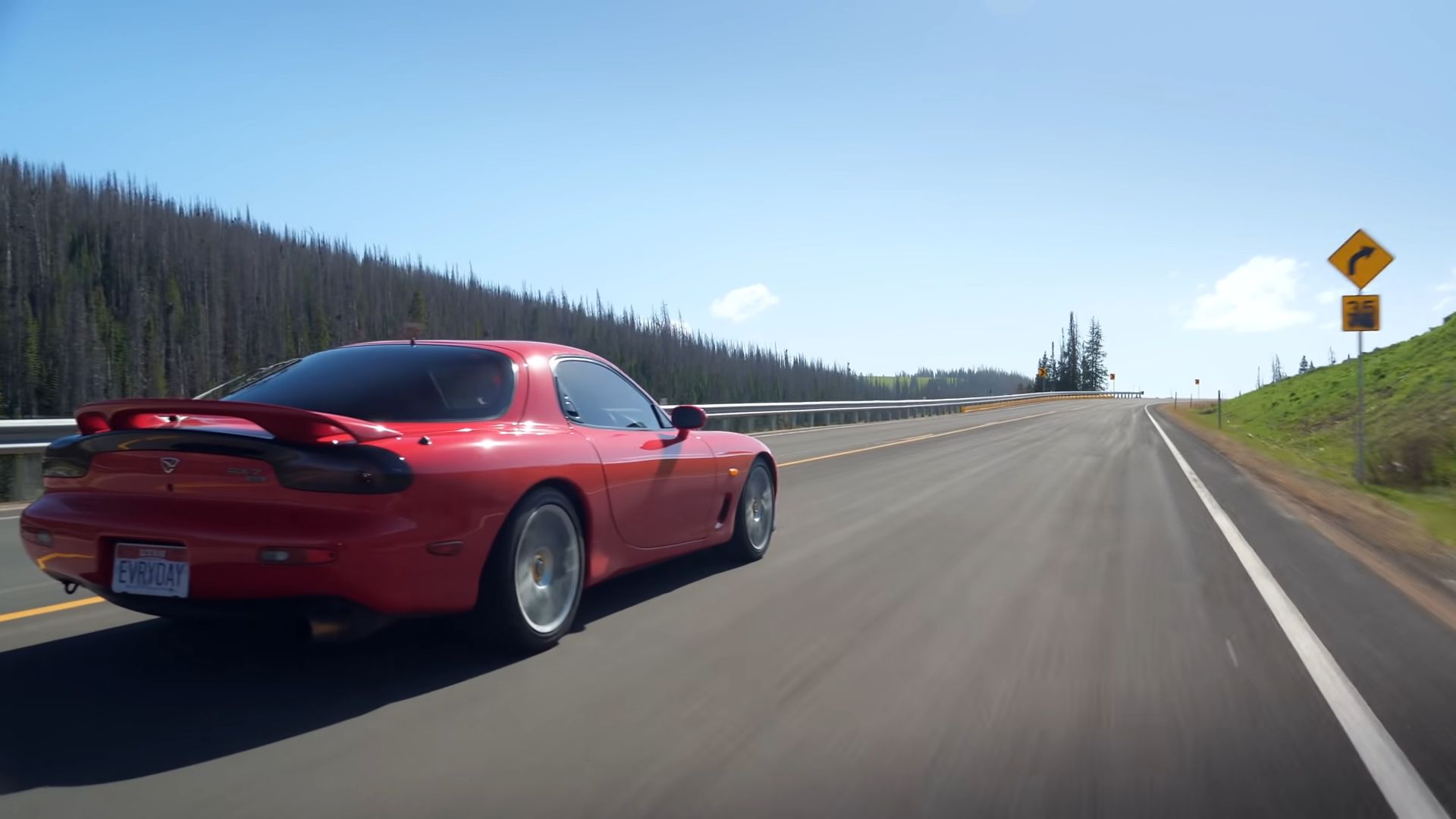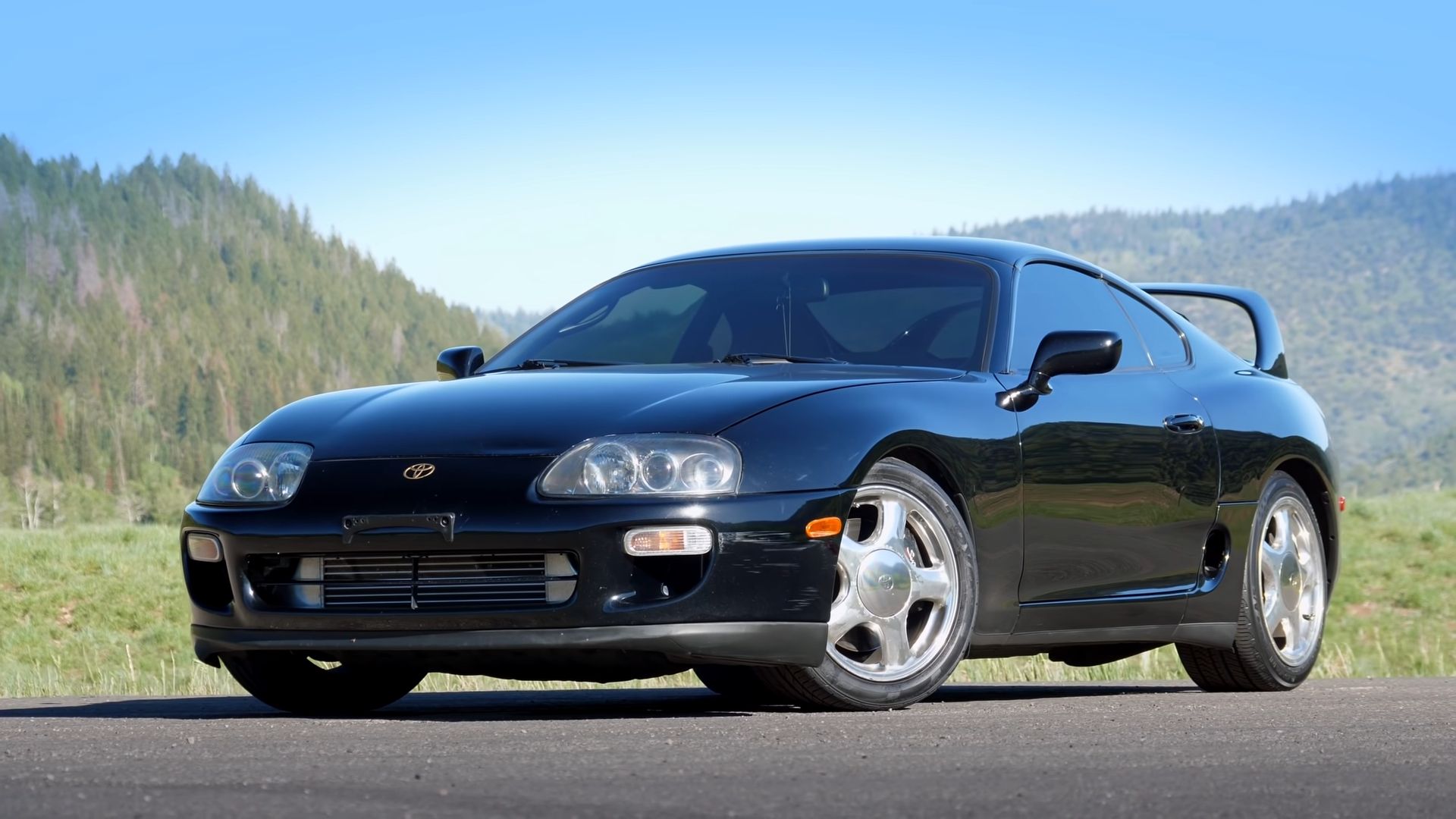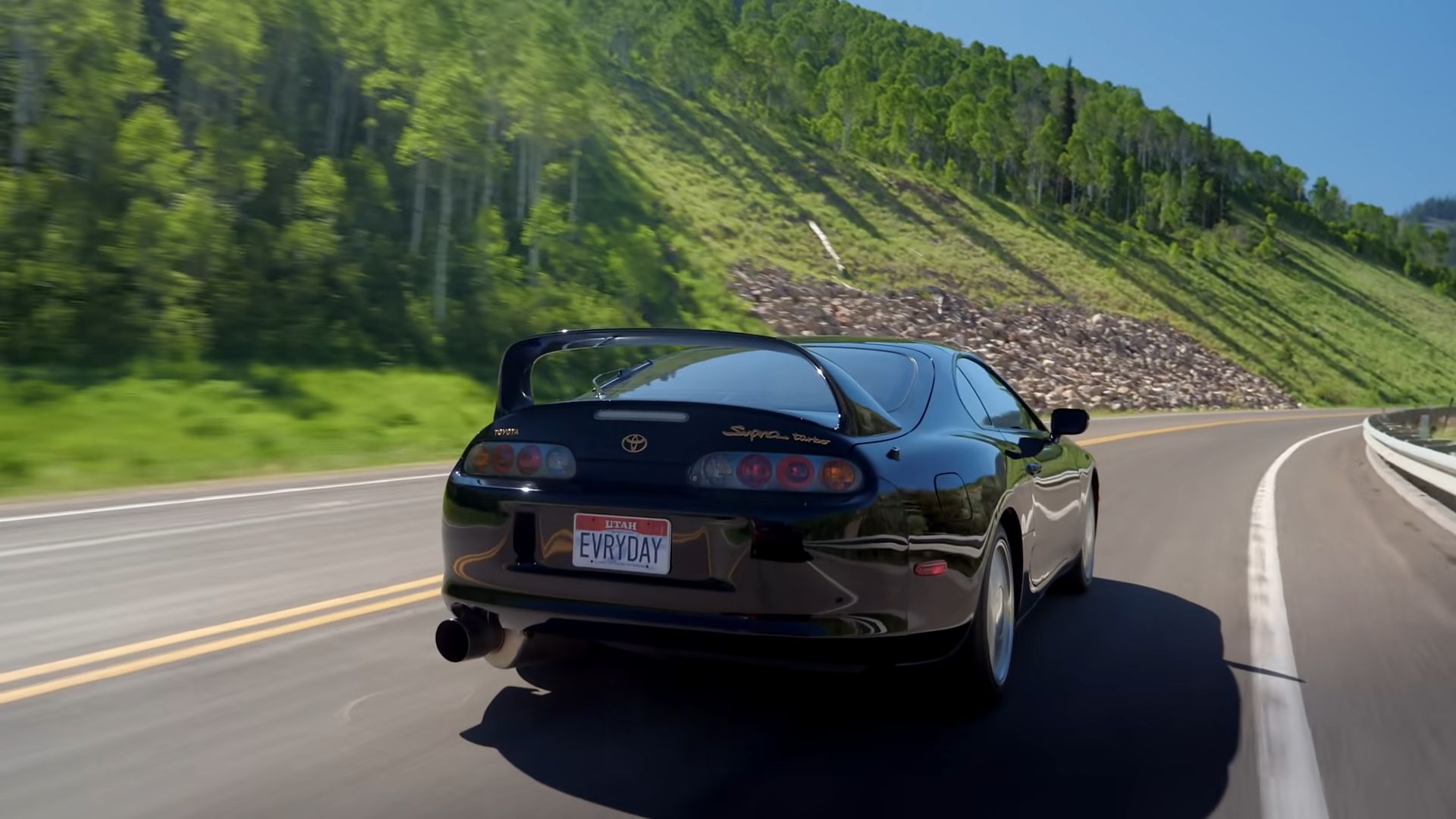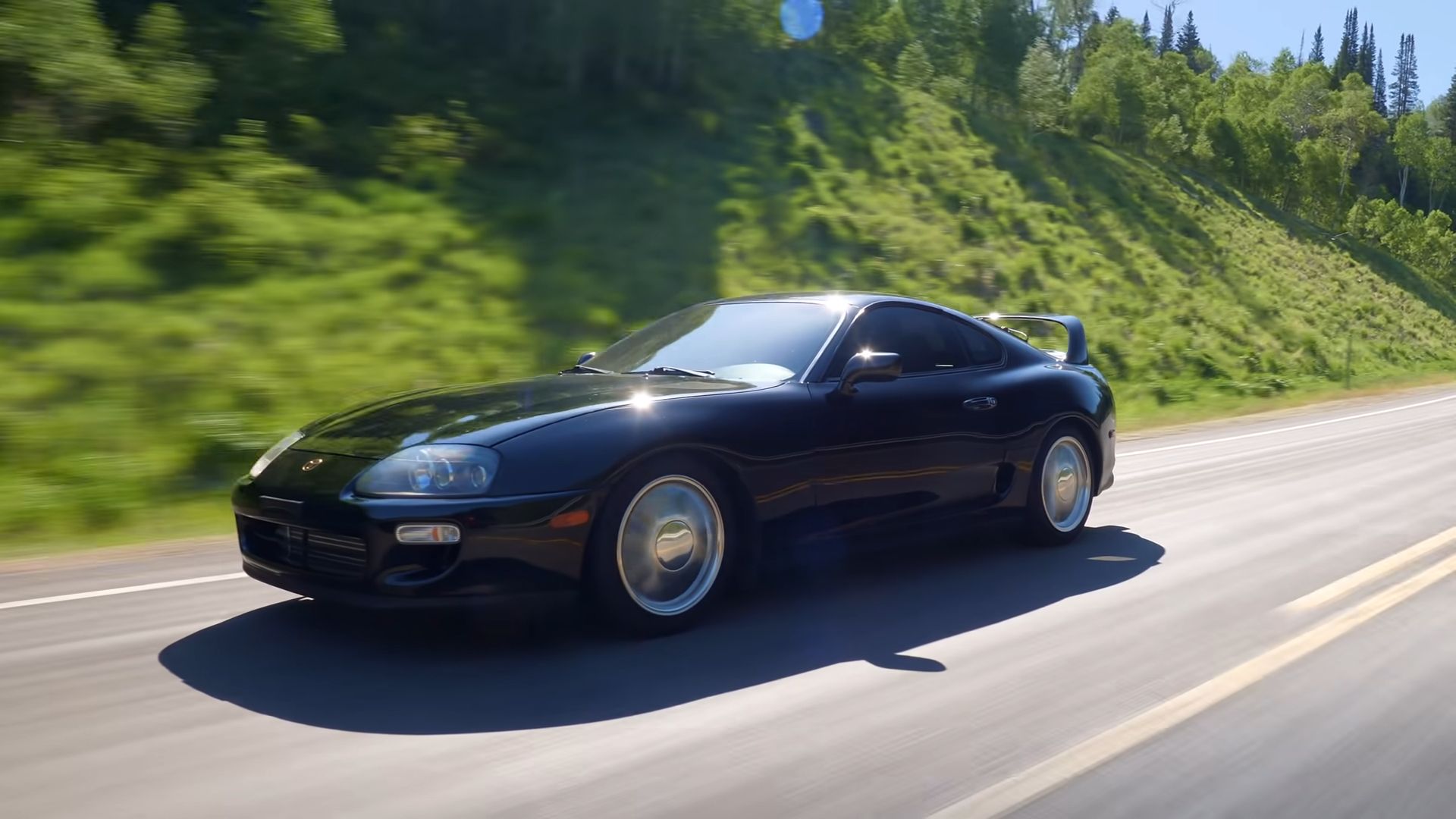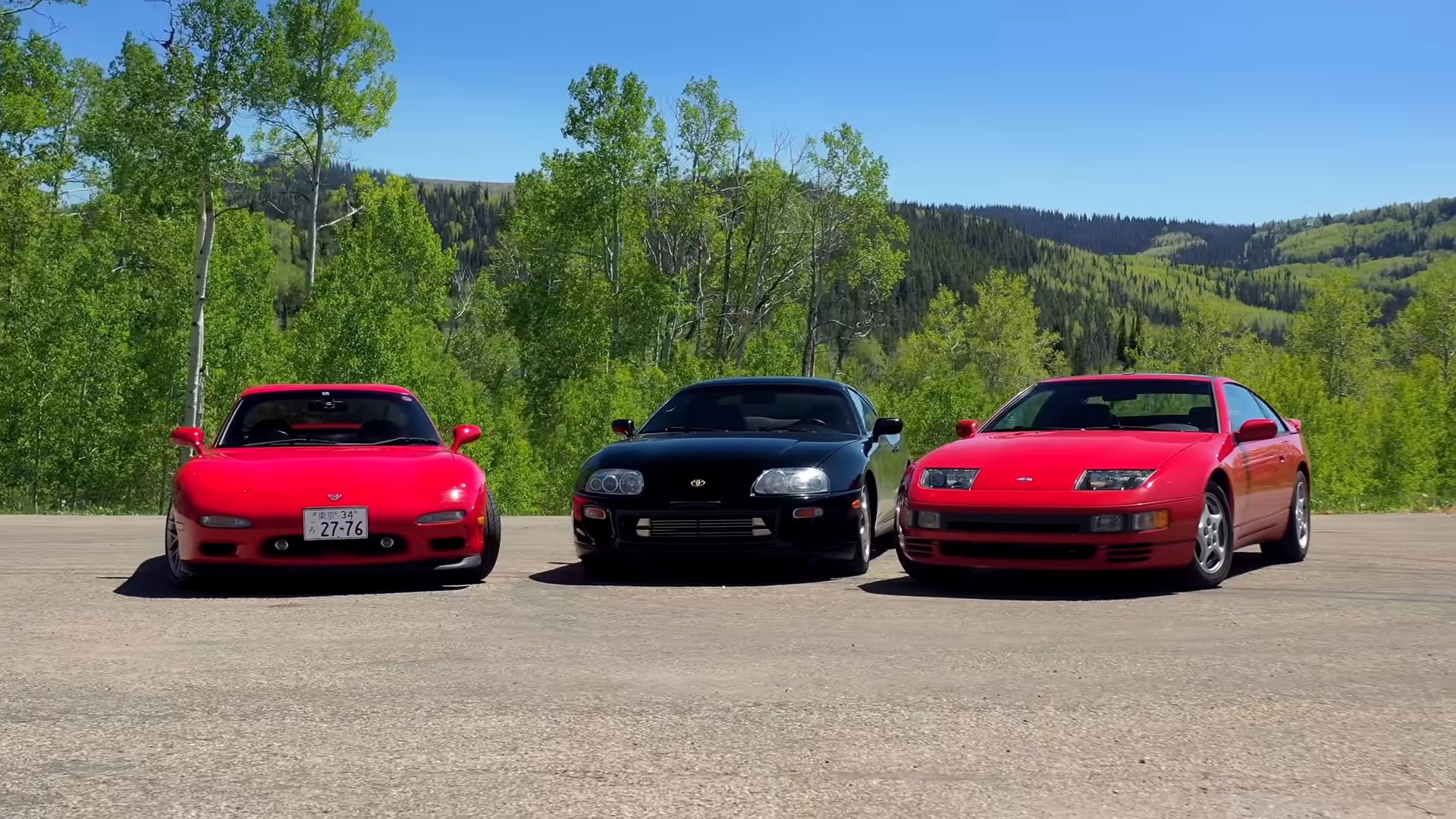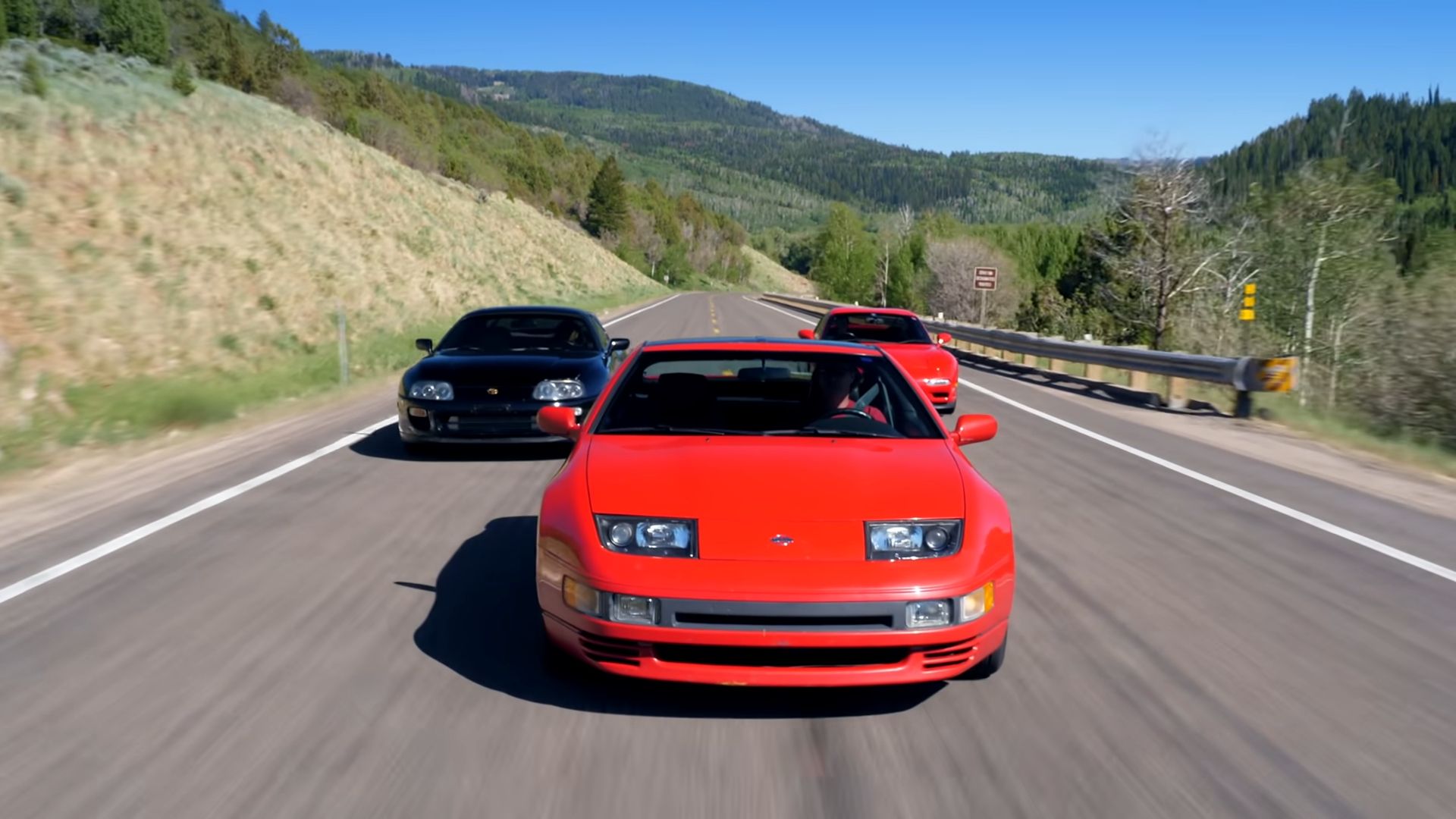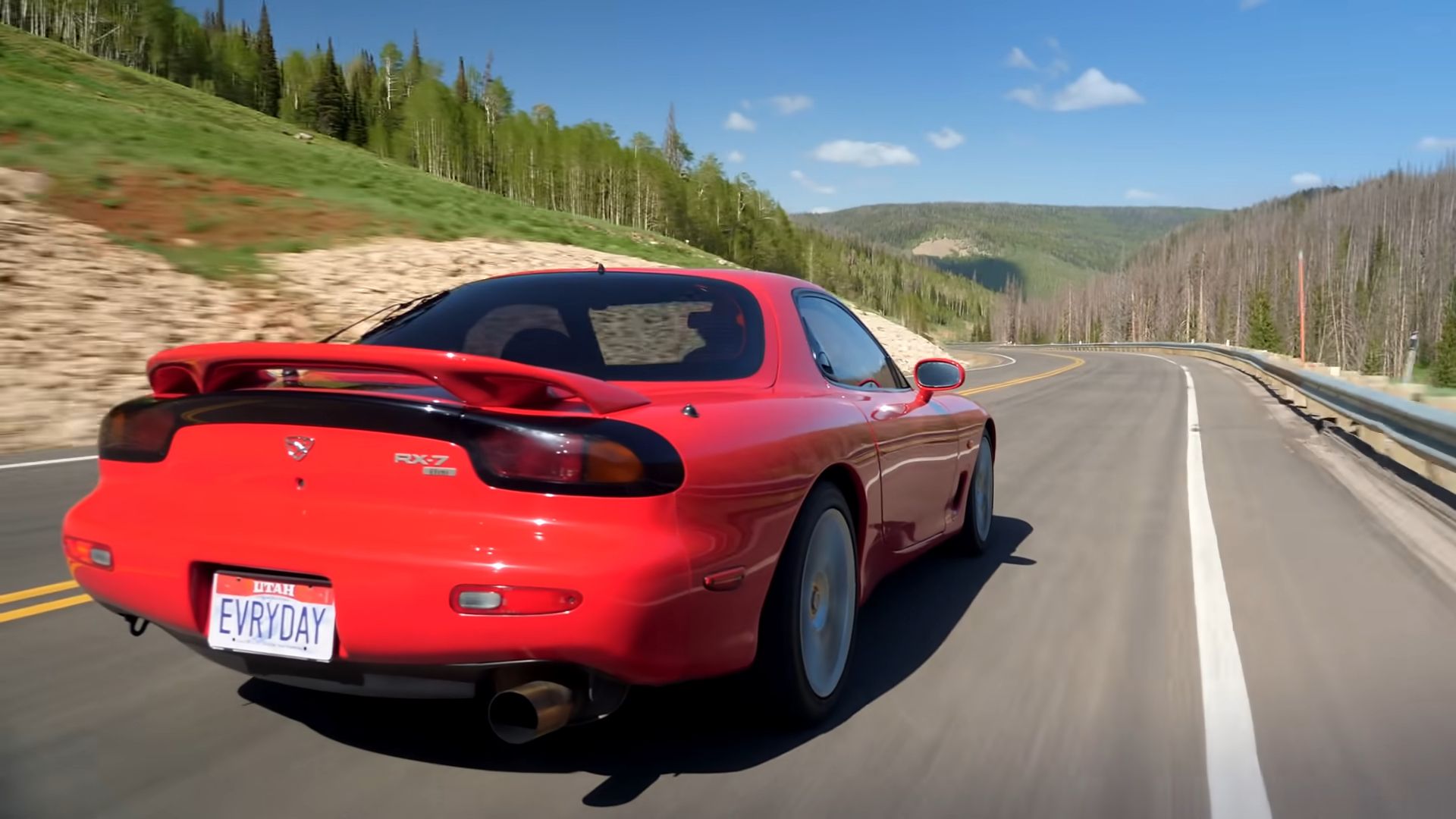Japanese sports cars from the 1990s are some of the most recognized ones amongst the car culture. As described by Jeremy Clarkson, in a movie about the Nissan Skyline GT-R, Japan took over the world…and then lost it. While the latter is a topic for another time, what is true for the Skyline also goes for these three – the Toyota Supra, Nissan 300Z, and Mazda RX-7. Our colleagues from “EverydayDriver” - Todd Deeken and Paul Schmucker - take us on a spirited drive with these three JDM legends to determine the pros and cons of each and why they are so desired.
Nissan 300ZX
The hosts have managed to secure three stock-ish examples of these JDM legends, the first of which is a 1991 Nissan 300ZX (Z32) Twin-turbo. The Z32-generation actually came out in 1989, which is a testimony of how ahead of the time Japan was, both in terms of design and technology. Todd describes it as “a spaceship, dropped from the heavens” and it showed that “Nissan is thinking independently and they are doing their own thing”.
The beauty of 1990s Japanese design – no screens in the interiors, Paul notes. Tood joins in by praising the simplicity of the interior, with its sloped center console, similar to that of the Honda NSX – another JDM icon – and the clusters of buttons, which are flanking the steering wheel on both sides, so you can keep your hands where they are supposed to be.
How Does The Nissan 300ZX Drive?
All three cars have some miles (or should we say kilometers) put on them and in the case of the Nissan, it has 74,000 miles on the clock. From the factory, the 3.0-liter twin-turbo V-6 VG30DETT engine makes 300 horsepower and 285 pound-feet (386 Nm). This may not seem like a lot these days, but Paul describes it as a monster. It’s worth noting that none of these cars is completely stock and the 300ZX has a chip, which bumps power to 360 horsepower.
Nissan 300ZX specifications
|
Engine |
3.0-liter twin-turbo V-6 VG30DETT |
|---|---|
|
Power |
300 HP |
|
Torque |
285 LB-FT |
The V-6 engine provides a constant surge of power, but the five-speed manual does not want to be rushed. “There’s no fast interaction here, which I have gotten used to in modern six-speed manual transmissions”, Todd explains. “The car is fast, the gearbox, is not”, he concludes.
In terms of handling characteristics, the Nissan 300ZX features a slow steering rack, with a 17:1 ratio. In fact, all three cars feature slow steering racks, but in the Nissan, it’s most apparent. Just for reference, modern cars have much quicker steering racks, usually with a ratio of around 11:1.
One thing to talk about in the 300ZX is the “High-capacity actively-controlled suspension” or HICAS, which, essentially, gives the Z32 four-wheel steering. In 1994, the system switched from hydraulic to electronic actuation - one of the many improvements the Z32 would undergo, over the years. The same system was present on the Nissan Skyline R32 GT-R, but being one of the first active-suspension systems, it was rudimentary.
Nissan developed the system with slalom in mind, but the problem is that mid-corner, the system effectively changed the steering ratio from 17:1 to 14:1. Needless to say, this introduced a degree of unpredictability, which is why most owners disconnect the system, especially in high-horsepower applications.
In conclusion, Paul mentions how, despite the Z’s complexity, it provides plenty of feedback and still feels mechanical. “That’s why the electronics are replicating this and we’ll always chase these cars”, he concludes.
Mazda RX-7
For the review, they have managed to get a hold of a 1992 FD RX-7 and Paul immediately praises the elegant, typical 1990s shape of the Japanese coupe. With less than 82,000 kilometers (51,000 miles), the car has fewer miles than the other two, and “you can tell by the quality of the exterior and the interior”, Todd remarks.
Once you get inside, you quickly notice how delicate and purposeful everything is. The Mazda is, by far, the lightest car here, tipping the scales at just 2,800 pounds (1,270 kg). This being a Japanese-spec vehicle (it also has the steering wheel on the right), it has rear seats – something US-spec RX-7s don’t get, as they really aren’t very usable.
Everything in the interior “makes sense” and even with the steering wheel on the right, “you can just get in and drive”, Todd says. However, he also adds that he is “desperate for more space” and even his Lotus Elise is easier to get into and more spacious, once you are inside.
How Does The Mazra RX-7 Drive?
We already made it clear that the RX-7 is the featherweight of the trio, although you probably already knew that. This is, in part, due to its engine, which is a 1.3-liter twin-rotary, twin-turbo engine that, in stock form, produces 255 horsepower and 217 pound-feet (294 Nm). It spins and it spins and it spins, and just when you think the spinning is all done, that’s when the real spinning starts”, Paul says when describing the rev-happy nature of the engine.
Mazda RX-7 specifications
|
Engine |
1.3-liter twin-rotary, twin-turbo |
|---|---|
|
Power |
255 HP |
|
Torque |
217 LB-FT |
Both the RX-7 and the Supra feature a sequential twin-turbo setup, meaning one turbo spins at low RPMs, which later “hands over” to the second one, above 4,000 RPM. And while the Supra is famous for having this setup, it was the Mazda who had it first.
As good as the car is to drive, however, rotary engines are known to be plagued by many issues, due to their specific design. “When it goes wrong, it goes very wrong” and both hosts agree that’s exactly what stops you from fully enjoying the car.
As good as the car is to drive, however, rotary engines are known to be plagued by many issues, due to their specific design. “When it goes wrong, it goes very wrong” and both hosts agree that’s exactly what stops you from fully enjoying the car, even if it’s the most focused of the three and provides the rawest driving experience.
Toyota Supra
Unlike the other two cars, the hosts managed to find a later, 1998 Toyota Supra, which means more safety features, including dual-airbags. Like the RX-7, the Supra is a 2+2 coupe, but here, the rear seats are relatively usable. There’s also a longer-wheelbase Nissan 300ZX 2+2, but the one here is the shorter version. Like the 300ZX, the Supra comes in two body types – a fixed-head coupe and a Targa.
The interior of the Supra is said to have been inspired by a fighter cockpit and features clean surfaces with the controls punched in them. No unnecessary trim, just a center console, curved towards the driver, and a clean instrument cluster. Todd describes the dashboard layout as a much better version of the one seen in the C4 Corvette.
Most of you may know the story of Toyota Supra’s rise to popularity. It was thanks to the original “Fast and Furious” movie it managed to achieve its legendary status. All of a sudden everyone wanted the Toyota that could beat a Ferrari. Because of this it now costs “more than you can afford pal”. Well, maybe not you, but most other people. But what is it like to drive a stock-ish Supra?
How Does Toyota Supra Drive?
When it comes to the Supra, immediately the spotlight is shined on its engine. The legendary 2JZ GTE boasts 3.0 liters of displacement, an inline-six configuration, sequential twin-turbos, and the ability to make insane power, with the right parts. In stock form, the 2JZ GTE makes 320 horsepower and 315 pound-feet (427 Nm). Ideally, the inline-six will be mated to a six-speed Getrag V160 manual, which is as robust as the engine itself.
Toyota Supra specifications
|
Engine |
3.0-liter inline-six |
|---|---|
|
Power |
320 HP |
|
Torque |
315 LB-FT |
Because of its over-engineered hardware, all of a sudden the Supra was considered the best thing ever, but it actually wasn’t good just for 1,000+ horsepower, big single turbo, drag builds. In fact, Paul considers this to be a waste of the Supra’s potential because it can do so many other things, just as good. It’s a comfortable cruiser and the chassis is capable enough to confidently tackle the twisty roads.
One thing you may not know is that the stock, sequential twin-turbo setup causes premature wear on the second turbocharger, which is why many of the non-high-horsepower Supras switch to a parallel twin-turbo setup, like in the Skyline GT-R, where there’s one turbocharger for every three cylinders.
Finding a stock Supra is difficult for obvious reasons and even this one is not completely spared, as it features an aftermarket exhaust and a downpipe. Paul makes a remark that, although all three cars are mechanical, the Supra is more visceral. “It feels much more than the other two. I’m getting gearing, I’m getting pistons, I’m getting mechanical interaction”.
Todd also praises the gearbox, which is the only six-speed unit here. It has well-spaced gears and the shifter-throws are the shortest of all three. He also adds that the Supra has a much easier clutch than the other six-cylinder car – the 300ZX – and is, overall, easier to drive. With 155,000 miles (258,000 km) on the clock, the Supra has been driven the most of the three, but it doesn’t show. “With as much mileage on it as it is, it still feels fresh to me”, Paul says.
While on the subject of how a car feels, the Supra is also one of the heavier cars here and yet it manages its weight so well. “I do like light cars, but I do need power with them. That RX-7 is speaking to me, but this one (the Supra) is like a homecoming. It’s fluid, it’s natural. It could be lighter, but it was pretty decent for the time”, Paul adds.
Are These Japanese Legends Worth The Price?
The Nissan 300ZX, Mazda RX-7, and Toyota Supra are loved for different reasons. They have entire car communities, revolving around them and keeping the legends alive, including the manufacturers. The Nissan 300ZX was the pinnacle of technology when it came out and 30 years later, it still begs you to take it on a tour, on some of the best roads you can find. No one cares, that a newer car can do the same thing faster. “I’m still feeling all of the individual elements that make this one, what it is”.
As for the Mazda RX-7, it can easily be described as one of the greatest cars that you absolutely need to drive, but probably shouldn’t own. It’s lightweight, visceral, focused, and distinctive, but its rotary engine is one of the most difficult to live with.
Looking at the Supra, you quickly understand why people use them for high-horsepower builds. But it’s real talents remain underappreciated, by most. The chassis, the feedback you get from driving it, are some of the best, not just 30 years ago, but even today. Moreover, it “feels solid and excellent” even after 155,000 miles, which really is a testimony to Toyota’s engineering prowess. "Nothing on this car feels 30 years old, nothing!"
As for the price, a clean RX-7 will easily set you back around $30,000, while a clean Nissan 300ZX can jump the $30,000 mark. If you want a Toyota Supra turbo, current prices start at $60,000. You can get faster, newer cars for the same amount, but how many cars, in this price range, but the real question is, how many new cars can replicate the driving experience of these three legendary, Japanese sports cars?
As for the hosts' personal choices, each of them ranked the cars differently. Surprisingly, power-hungry Paul put the least powerful car in first place - a testament to the pure driving experience, the RX-7 provides. Paul was very excited about driving the Supra and was constantly praising it, but in the end, he put it in third place.
As for Todd, he couldn't overcome the uneasy feeling of driving a car with an engine that could go wrong at any moment. No matter how much he enjoyed the rotary Mazda, he put it in third place. However, he also chose to endure a lot of potential internet hate and chose the Nissan 300ZX, leaving the Toyota Supra in second place.

